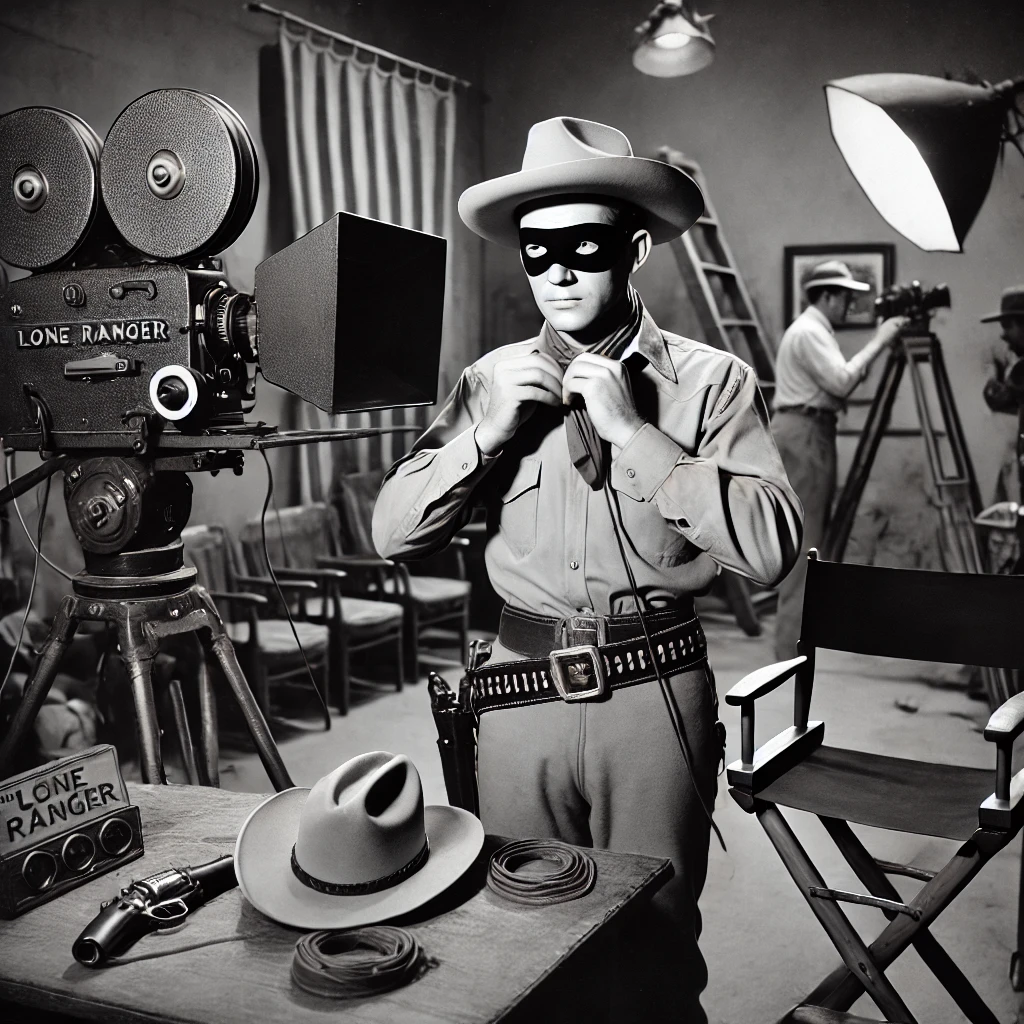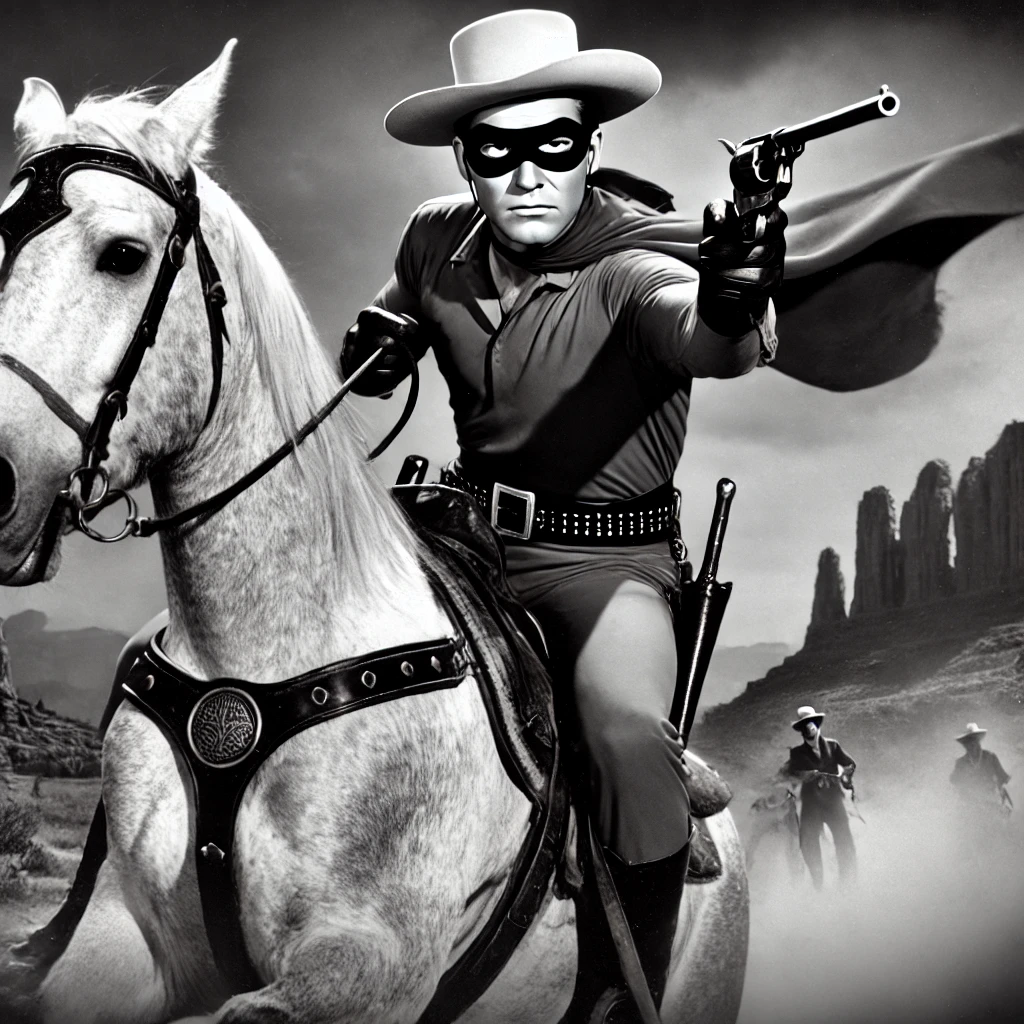On September 15, 1949, a classic American entertainment icon transitioned from radio to television, marking a significant moment in media history. “The Lone Ranger,” initially a popular radio series, made its debut on the small screen with Clayton Moore in the role of the masked lawman. This adaptation not only captivated viewers with its thrilling stories but also set a new standard for television programming and had a lasting impact on American pop culture.
Origins of The Lone Ranger
The journey of “The Lone Ranger” began on January 30, 1933, when the radio series first aired on the American Broadcasting Company (ABC) network. Created by George W. Trendle and developed by Fran Striker, the show was set in the Old West and followed the adventures of a masked hero dedicated to justice. The Lone Ranger, along with his faithful Native American companion Tonto, fought for right and order, becoming a symbol of heroism and integrity.

The radio series was notable for its innovative use of sound effects, which brought the Wild West to life for listeners. The show’s compelling narratives, engaging characters, and memorable theme music, including the iconic “William Tell Overture,” contributed to its success. As a result, “The Lone Ranger” became one of the most beloved radio programs of the era, paving the way for its eventual adaptation to television.
The Transition to Television
The success of “The Lone Ranger” on radio set the stage for its transition to television. The television adaptation premiered on September 15, 1949, on the ABC network. This transition from radio to television presented new challenges and opportunities, requiring the adaptation of storytelling techniques to fit the visual medium. Clayton Moore was cast as the Lone Ranger, a role that would become synonymous with his career.
The television series retained the core elements that made the radio version popular, including the Lone Ranger’s commitment to justice, his iconic mask, and his partnership with Tonto. The visual medium allowed for dynamic action sequences and elaborate set designs, enhancing the storytelling experience. This adaptation demonstrated the potential of television to bring classic radio shows to life in a new and engaging way.

Impact on Popular Culture
“The Lone Ranger” quickly became a cultural phenomenon following its television debut. The show’s blend of action, drama, and moral lessons resonated with viewers, making it a hit among audiences of all ages. The show’s theme music, particularly the “William Tell Overture,” became closely associated with the series and remains iconic to this day.
Clayton Moore’s portrayal of the Lone Ranger was widely acclaimed, and his performance helped define the character for a new generation. Jay Silverheels, who played Tonto, also received praise for his role, and the chemistry between Moore and Silverheels contributed to the show’s success. The series’ strong performances and memorable characters established it as a beloved part of American television history.
Influence on the Western Genre
The success of “The Lone Ranger” on television had a significant impact on the Western genre. The show set new standards for storytelling, production values, and character development in Western television. Its influence can be seen in subsequent Western series and films, which adopted similar themes and storytelling techniques.
The television adaptation of “The Lone Ranger” contributed to the popularity of the Western genre in the mid-20th century. The show’s success demonstrated the potential of television to bring the excitement of the Old West to audiences and paved the way for other Western series to follow. The impact of “The Lone Ranger” on the genre highlights the show’s role in shaping television programming and entertainment.

Cultural Significance
The cultural significance of “The Lone Ranger” extends beyond its influence on the Western genre. The character of the Lone Ranger represents ideals of justice, bravery, and moral integrity, which resonated with audiences during a time of social and cultural change. The show’s portrayal of these values reflects broader societal ideals and contributed to its lasting popularity.
The series also played a role in shaping the representation of American heroes and the portrayal of justice in media. The Lone Ranger’s commitment to righting wrongs and upholding moral principles became an enduring symbol of heroism. The show’s impact on popular culture underscores the importance of storytelling in shaping cultural narratives and inspiring audiences.
Lasting Legacy
The legacy of “The Lone Ranger” endures through its continued presence in media and entertainment. The character remains a symbol of heroism and justice, and the show’s influence is evident in subsequent adaptations and interpretations. The series’ impact on television and popular culture highlights its significance in the broader context of entertainment history.
The television adaptation of “The Lone Ranger” set a precedent for the adaptation of radio programs to television, demonstrating the potential of the medium to bring beloved stories to new audiences. The show’s success and lasting influence reflect the power of television to create memorable and impactful entertainment.
Cultural Resonance
The cultural resonance of “The Lone Ranger” is evident in its continued popularity and relevance. The show’s themes of justice and heroism continue to captivate audiences, and the character of the Lone Ranger remains an iconic figure in American entertainment. The show’s enduring appeal underscores the lasting impact of its storytelling and the values it represents.
The series also contributed to the broader representation of American heroes and the portrayal of justice in media. The Lone Ranger’s legacy serves as a reminder of the power of storytelling to connect with audiences and inspire positive values. The show’s influence on popular culture highlights its significance in shaping cultural narratives and entertainment history.
Enduring Influence
The enduring influence of “The Lone Ranger” is a testament to the show’s ability to connect with audiences across generations. The character’s legacy continues to inspire new adaptations and interpretations, reflecting the timeless appeal of the Lone Ranger’s adventures. The series’ impact on television and popular culture underscores the significance of storytelling in creating lasting and meaningful entertainment.
The television debut of “The Lone Ranger” on September 15, 1949, marked a milestone in media history, showcasing the evolution of entertainment and the power of television to bring classic stories to life. The show’s success and lasting influence demonstrate the impact of television in shaping popular culture and creating iconic characters that resonate with audiences.
Lasting Impact
The debut of “The Lone Ranger” on television represented a pivotal moment in the evolution of entertainment. The transition from radio to television highlighted the medium’s ability to adapt and expand upon existing stories, bringing beloved characters to new audiences. The show’s enduring legacy reflects its impact on television and popular culture, serving as a testament to the power of storytelling and the lasting appeal of the Lone Ranger.
